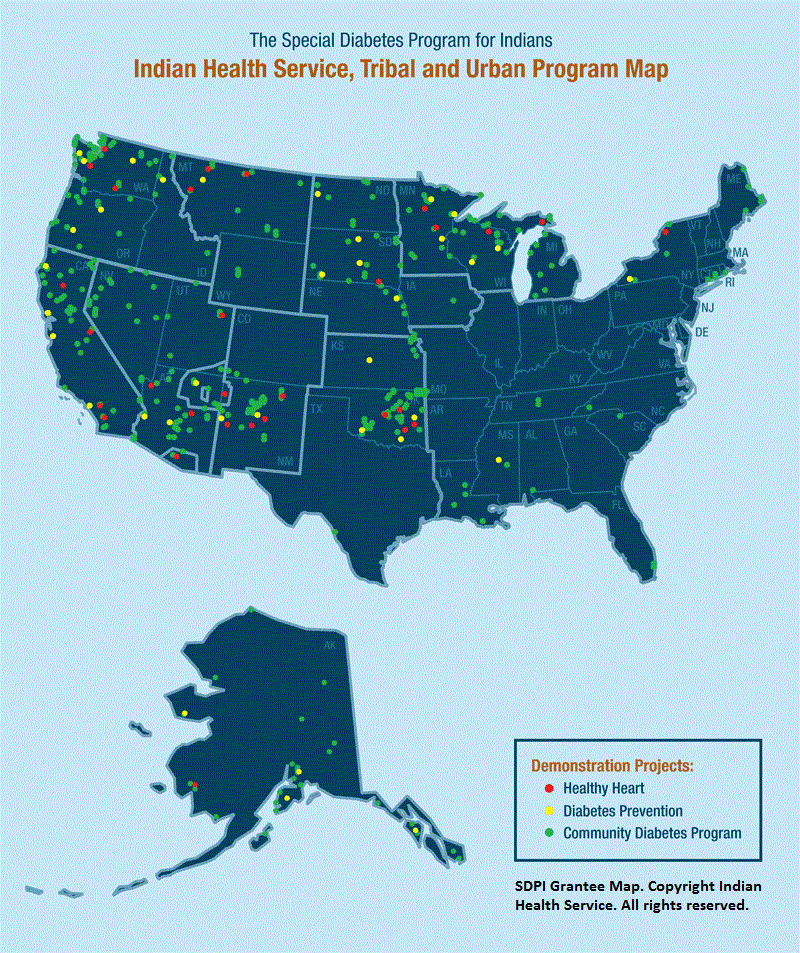Diabetes Intervention for Native Americans
In my last topic, I talked about a return to traditional foods and mentioned the impact of food on health. There are shocking statistics about type 2 diabetes among Native Americans and Alaska Natives. In conversations about health disparities in Indian communities, diabetes is often mentioned as one of the biggest epidemics afflicting Natives. To put things in perspective, Native Americans and Alaskan Natives represent only 1.2% of the U.S. population yet have the highest rate of type 2 diabetes of any ethnic group in the U.S.
For many years, diabetes prevention had little success in reducing the rates of diabetes in Indian country. Officials outside of Native American communities at first failed to realize that a unique approach is needed to lower diabetes among Natives. Finally, in 1997, Congress established the Special Diabetes Program for Indians (SDPI) under the Indian Health Service (IHS).
The goal of SDPI was to “…fund diabetes prevention and treatment services in IHS,” according to Native Sun News. Understanding that Native American communities are diverse culturally, economically and regionally, SDPI was implemented on rural reservations and in urban IHS programs as well. Roughly 2,500 pre-diabetic individuals from 80 Native American and Alaska Native tribes participated in the SDPI program.
Beginning in January 2006, IHS translated the diabetes clinical trials of NIH into a large-scale lifestyle intervention project aimed at tribal communities. Participants in this demonstration project were challenged to lose 7% of their body weight with voluntary lifestyle intervention that included modifying behavior, diet and exercise.
After intervention, not only did fewer new cases of diabetes result among the SDPI group, but participants also made positive changes in their weight and blood pressure. The results didn’t end there – improved health among SDPI participants was recorded for as long as three years after the SDPI lifestyle intervention.
The success of the SDPI lifestyle intervention opens new pathways for battling diabetes in Native American communities. The demonstrated effectiveness of the intervention suggests that it can be successfully implemented on all federally-recognized Indian reservations and in urban IHS facilities, if funding is available. Perhaps with the insight gained through SDPI, we will live to see the smallest racial group in the U.S. have the lowest rate of diabetes.


